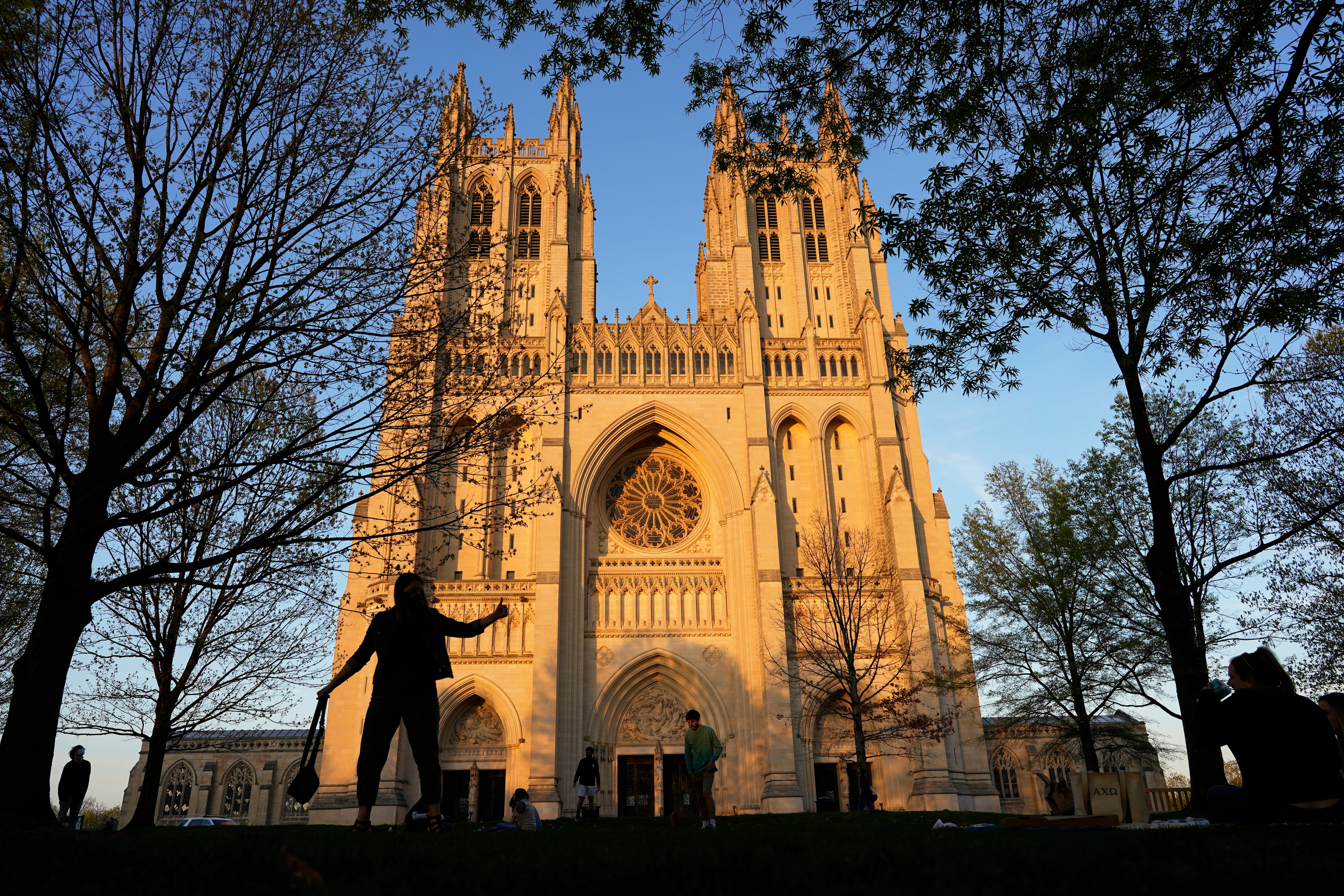Famed cathedral names artist to replace Confederate windows
Washington National Cathedral says an artist renowned for his works depicting African American life will design new stained-glass windows with themes of racial justice that will replace ones at the landmark sanctuary with Confederate imagery

Washington National Cathedral has chosen contemporary artist Kerry James Marshall, renowned for his wide-ranging works depicting African American life, to design new stained-glass windows with themes of racial justice that will replace a set with Confederate imagery that the landmark sanctuary removed in 2017.
The cathedral on Thursday said he will design four windows that will tell “a new and more complete” story of the nation's racial history. Poet Elizabeth Alexander will write a poem to be inscribed in stone tablets alongside the windows, overlaying older tablets that venerated the lives of Confederate soldiers, the cathedral said in a statement.
The project is expected to be completed by 2023.
The windows will replace a set that had honored two Confederate generals, Robert E. Lee and Stonewall Jackson, with saint-like reverence and had included a Confederate flag. The cathedral removed them in 2017, prompted by a larger national reckoning over Confederate imagery and white supremacy in the wake of deadly right-wing attacks in Charlottesville Virginia, that year and in Charleston South Carolina, in 2015. The window openings have been covered with plywood since 2017.
The setting is particularly significant in the massive neo-Gothic cathedral, which is filled with iconography depicting the American story in glass, stone and other media, with images ranging from presidents to famous cultural figures and state symbols.
The cathedral, also the seat of the Episcopal Church’s presiding bishop and Diocese of Washington, often serves as the setting for major national events.
In replacing the windows, the cathedral is acknowledging the need to correct what it called a “false narrative of what America once was.”
“For nearly 70 years, these windows and their Confederate imagery told an incomplete story; they celebrated two generals, but they did nothing to address the reality and painful legacy of America’s original sin of slavery and racism," the Very Rev. Randolph Marshall Hollerith, dean of the cathedral, said in a statement. He added: "We’re excited to share a new and more complete story."
He called Marshall “one of the greatest artists of our time" and praised Alexander's “incredible ability to capture the pain of yesterday and the promise of tomorrow.”
This will be Marshall's first work in the stained-glass medium after a long and acclaimed career using a variety of media to create portraits, and other works depicting Black life. Marshall was a MacArthur Fellow in 1997.
Marshall said in a statement: “This project is not just a job — I don’t need the work — or only a piece of art. It’s kind of a calling.”
Alexander, president of the Mellon Foundation, recited one of her poems at the 2009 inauguration of President Barack Obama and has published multiple books that include Pulitzer finalists. She said she was honored to be part of the cathedral's “effort to ensure that those who worship within its sanctuary know that it is truly a space for all people, and that the stories relayed through its sacred walls, windows and other iconography represent the truth of our nation.”
The cathedral loaned the Robert E. Lee window to the National Museum of African American History and Culture to serve as part of its new exhibit, “Make Good the Promises: Reconstruction and Its Legacies.” The museum said the window represents the “myth-building and the nationwide intimidation of African Americans through the embrace of Confederate symbols.”
___
Associated Press religion coverage receives support from the Lilly Endowment through The Conversation U.S. The AP is solely responsible for this content.